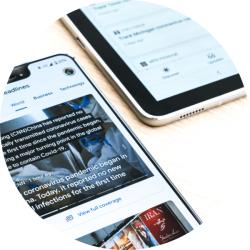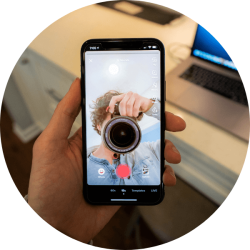It’s been two years since the start of the COVID-19 pandemic, and people around the world have adapted to new regulations and protocols, some permanent and others temporary. Communication experts have made changes to their daily practices, adjusting to a predominantly virtual workplace and the nuances and challenges that follow suit. As the media industry continues to evolve post-pandemic, here are four ways to adapt to the changing landscape of media relations.

Virtual Interviews are Here to Stay
The majority of media interviews are occurring virtually which allows national media coverage to become more accessible to smaller brands, according to PR Daily. For small organizations with limited budgets for media-related travel expenses, virtual interviews give business startups equal opportunities to be heard by the media. With the rise in virtual interviews since the pandemic, 57% of journalists believe virtual interviews are here to stay, according to a survey by Media Source TV. Virtual interviews also offer brands more control, occurring within their own environment with the option for interview edits under certain circumstances. Brands and journalists mutually benefit from virtual interviews, saving time, expenses, and the option to stay in the comfort of their own offices.

Keep a Pulse on Fast Paced News
In 2019, Schema, Google Trends, and AXIOS collaborated for a study, determining that the average lifespan of a news story is seven days. With the increased use of digital platforms, the average lifespan of a news story has only decreased, making it crucial to have a pulse on current news trends and upcoming story angles. Brands should prepare media assets including press releases, pitches, images, and more, and distribute them in a timely manner to secure the best chance in landing media interested in writing about their brand. For brands looking for media opportunities, it is important to have a regular pulse on industry and global news and be strategic with the element of time when a potential media opportunity arises, including the day and time that pitches are sent.

Authentic Responses with Your Expertise
With less communication happening in person and increased conversation happening through inboxes, brands may have the luxury of taking time to create strategic responses. While brands still have to keep the editor’s deadlines in mind, these few extra moments allow for more time to create thoughtful, authentic answers to showcase your brand’s expertise. Use provided prep sheets and research the editor’s recent published articles to aid in creating authentic answers that the editor can use in their upcoming story, according to Forbes.

Adding Visuals with Video
A picture has always spoken a thousand words, but the power of video has become a preferred media asset with the rise ofvideo platforms including TikTok and Instagram Reels. Videos are a form of storytelling that can build awareness of your brand in an authentic way. When utilizing video assets, be sure to showcase your brand voice, mission, and why consumers should invest in your brand. Video content also builds trust with the media and with potential consumers, according to Agility PR. Using video content in your media relations strategy can result in increased success in garneringearned media results.
The environment in which brands and media operate is always evolving. Maximize your media relations efforts post-pandemic by investing in tools and technology that help your brand adapt to the changing demands of the media landscape. PitchBox Media, for example, is the only subscription box service designed to help journalists discover brands, trends, and story ideas. PitchBox Media launched in 2020 at the height of the pandemic to provide an innovative solution for brands to build relationships with press who may now work remote and lean on virtual solutions to support the editorial process.

